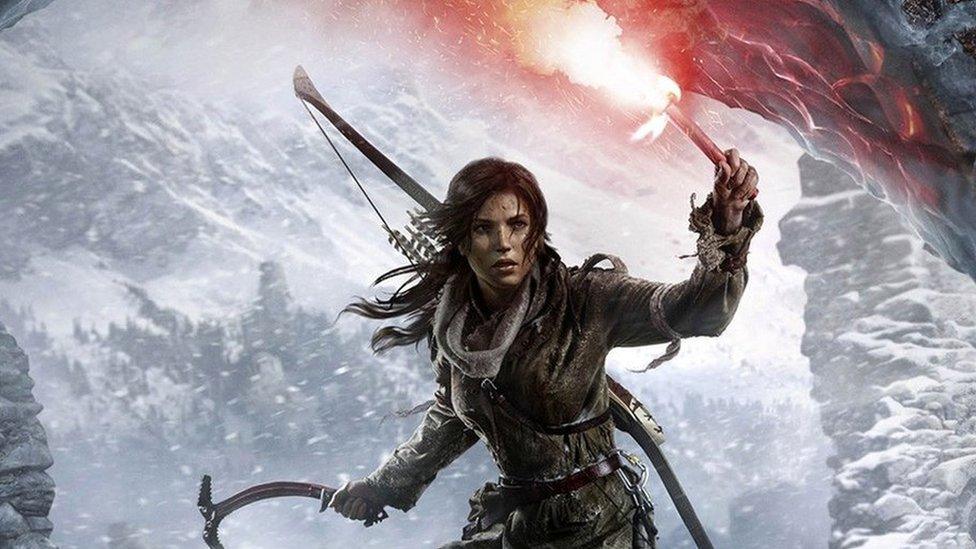Tomb Raider: How Lara Croft became a game changer
- Published

Lara Croft went from games consoles to Hollywood where she was played by Angelina Jolie
A feminist icon, a virtual blow-up doll, the sixth Spice Girl, a cyberbabe, an ambassador for Britain, or a distorted male fantasy? Lara Croft, who turns 20 today, has been described as all of these.
Born at the height of Britpop, the female protagonist of computer game Tomb Raider became one of the pillars of Cool Britannia - but also provoked the ire of feminists who criticised her sexualised image.
Her journey took in two Hollywood films, numerous magazine covers and advertising campaigns but began in the comparatively unglamorous English city of Derby.
Toby Gard wanted a strong female character as the lead role in Tomb Raider
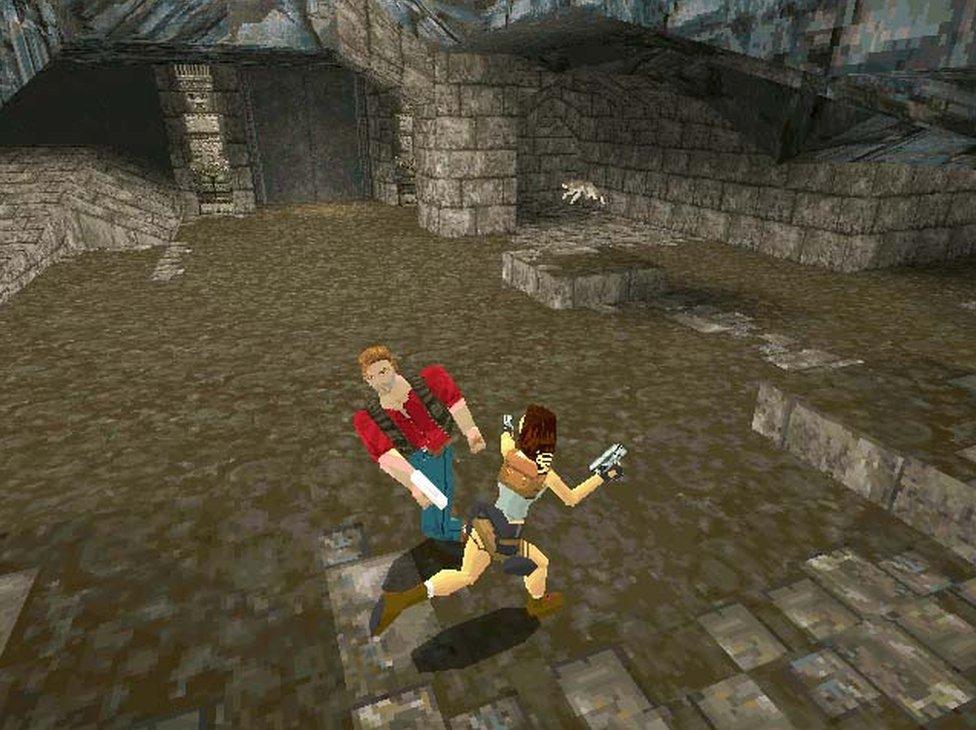
Lara Croft was made of just 250 polygons in the original Tomb Raider, while she was made of 200,000 polygons in 2015's Rise of the Tomb Raider
Tomb Raider was created by a small team of people working for Core Design, a video game developer founded in the city in 1988.
"The story goes that within the industry it wasn't easy to sell a female heroine," says Heather Gibson, one of the six developers who created the original game.
"Up until then they were quite masculine characters because your main market was men or boys."
The character was thought up by one of Heather's colleagues, Toby Gard, who has cited the comic character Tank Girl and musician Neneh Cherry as inspirations.
"He wanted a strong female character as the lead role," says Ms Gibson.
"It was pooh-poohed in its very original form but Toby just stuck with it."
The game was launched on 25 October 1996 - three months after Spice Girls released their debut single Wannabe.
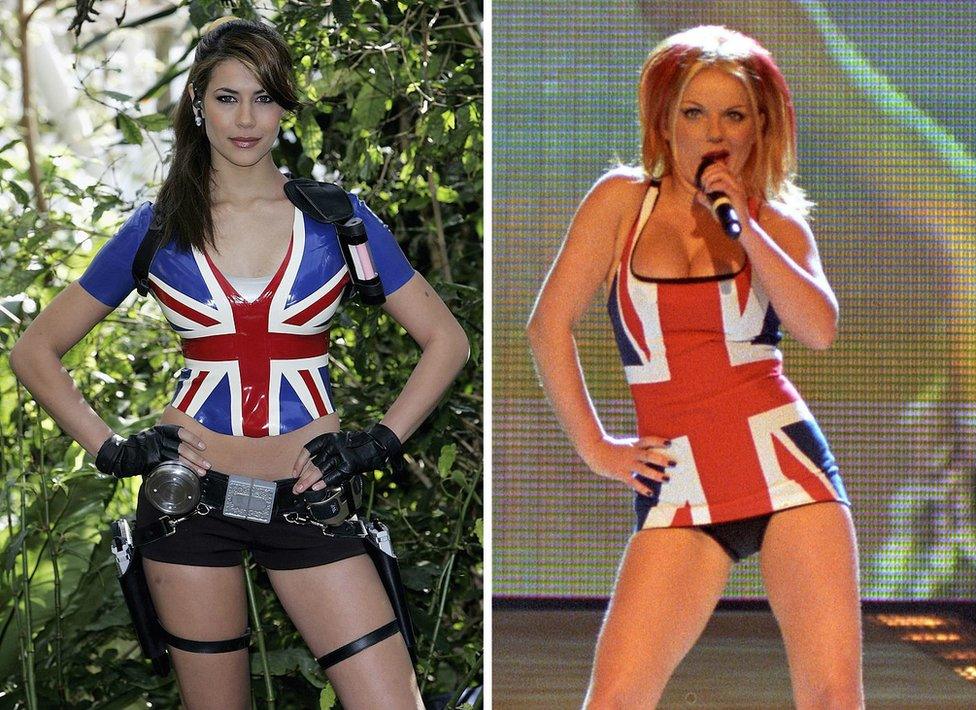
The game was launched just three months after the Spice Girls released their debut single Wannabe
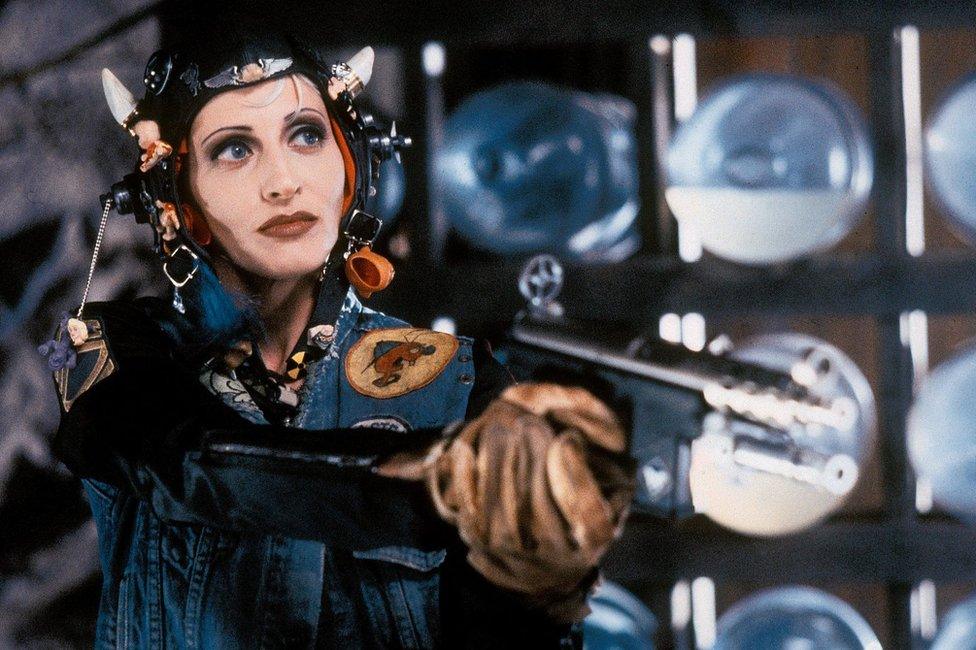
Comic character Tank Girl was one of the inspirations behind Lara Croft
"It's not coincidence that it was that sort of time," says Iain Simons, director of the National Videogame Foundation and the GameCity festival.
"I think she [Lara Croft] was part of a broader movement towards a new kind of powerful feminism that came about."
While the game's developers expected it to appeal to men and boys, it found an unexpected audience among women and girls.
In fact, early data from parent company Eidos suggested that 40% of the early players were female.
Among these was Meagan Marie, who was 12 when the first game was released.
"The initial attraction to the game was feeling represented," she says.
"It was really cool to see this beautiful woman who was so powerful and in control."
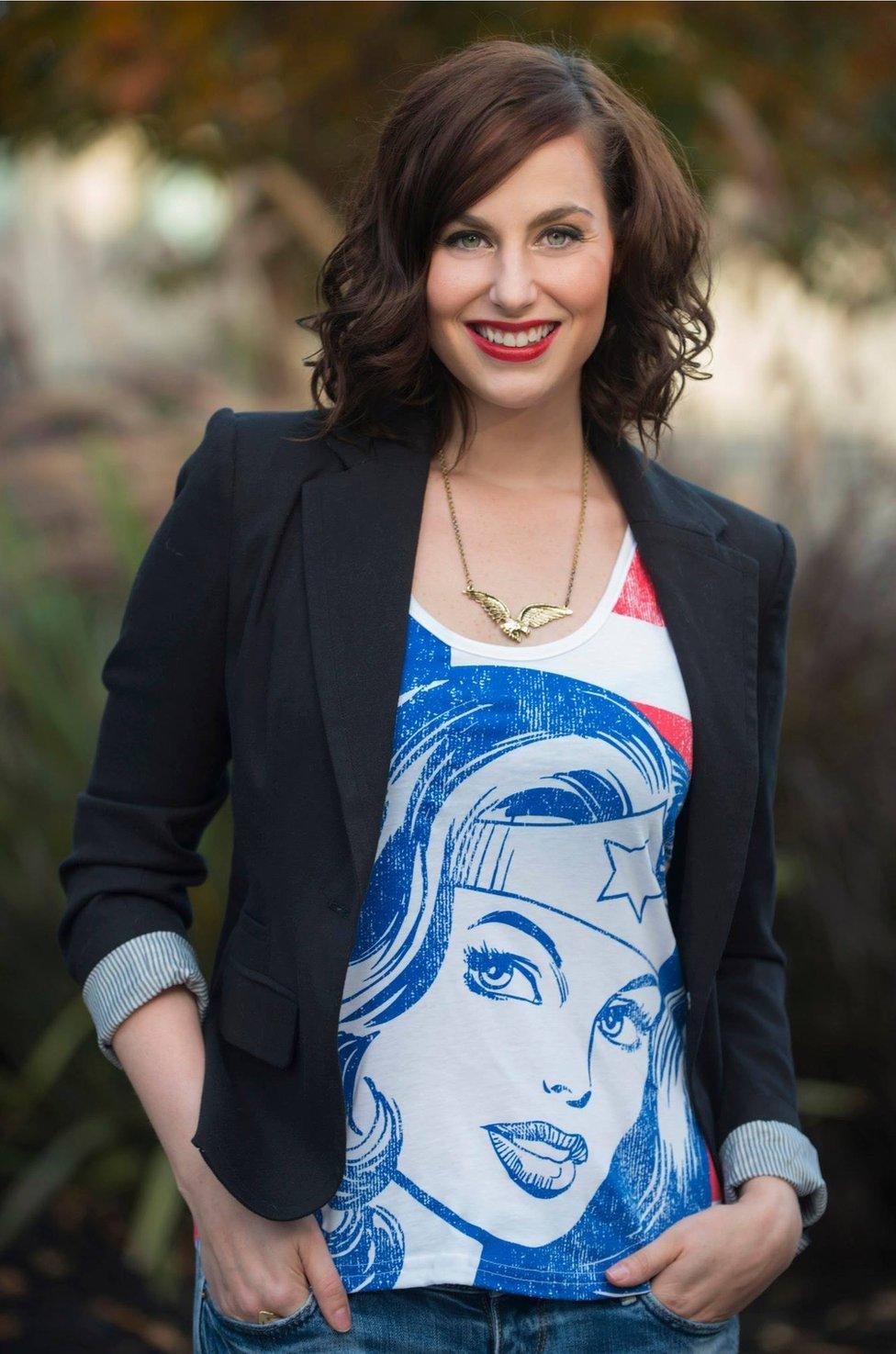
Meagan Marie was 12 when the original Tomb Raider was released and she now works in the video game industry
Ms Marie, who has written an official book - 20 Years of Tomb Raider - to mark the anniversary, says that Lara inspired her to push herself.
"That's one of the reoccurring things that I hear, especially with women specifically in my age range, in their early 30s," she says.
"I know so many women who talked about wanting to be an archaeologist or wanting to go into these other fields because Lara inspired them."
Ms Marie says there was a "perfect storm" when Lara popped up into public consciousness.
"She was a female protagonist and there weren't many," she says.
"It was also really at the time where Girl Power was starting to gain movement because of the Spice Girls."
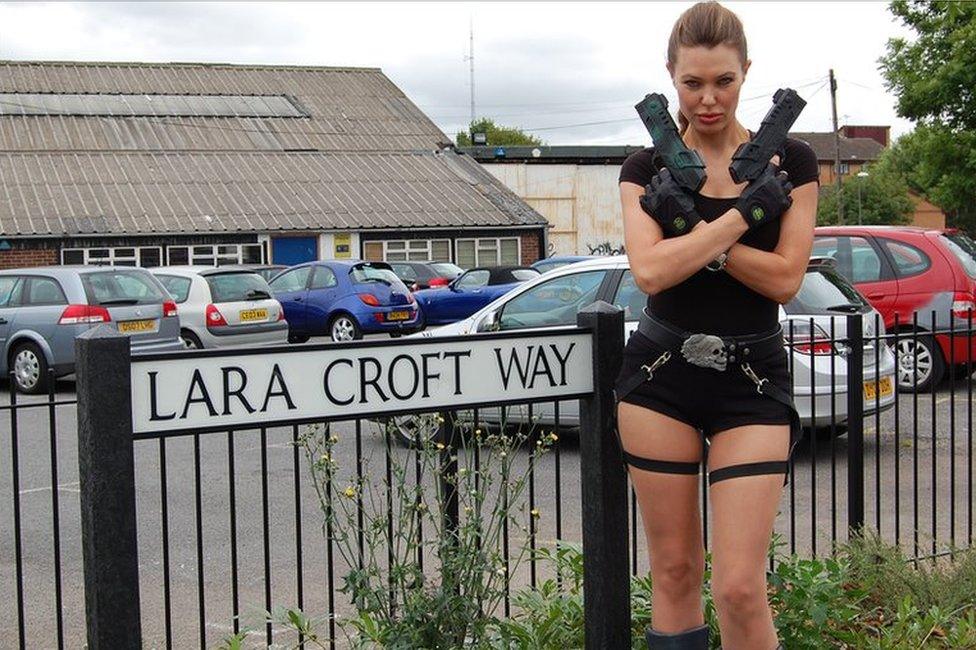
Part of a ring road in Derby was named after Lara Croft in 2010
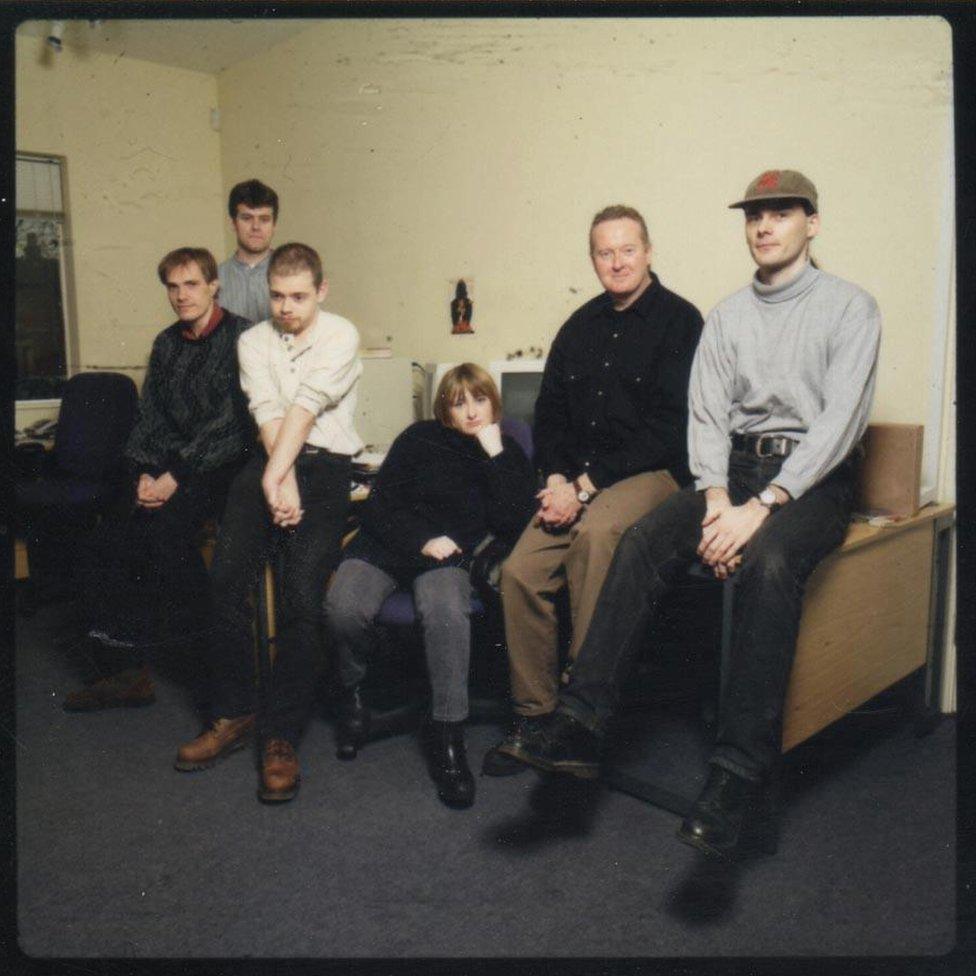
The game was created by a small team of developers, including Toby Gard (in the white top) and Heather Gibson (centre)
The game was originally launched on the Sega Saturn but it really took off when released on the more popular PlayStation the following month.
Its lead character soon became ubiquitous, gracing not just the covers of videogames magazines but lifestyle magazines too.
Brands used her to endorse their products, with notable adverts including Lucozade, Seat cars and Visa.
The band U2 used the character during their PopMart tour in 1997, where she appeared on stage in custom footage broadcast across a massive screen.
Lara also had a stab at becoming a pop singer herself and Rhona Mitra, the official Lara Croft model for 1997-8, recorded two whole albums with Dave Stewart, best known for being one-half of Eurythmics.
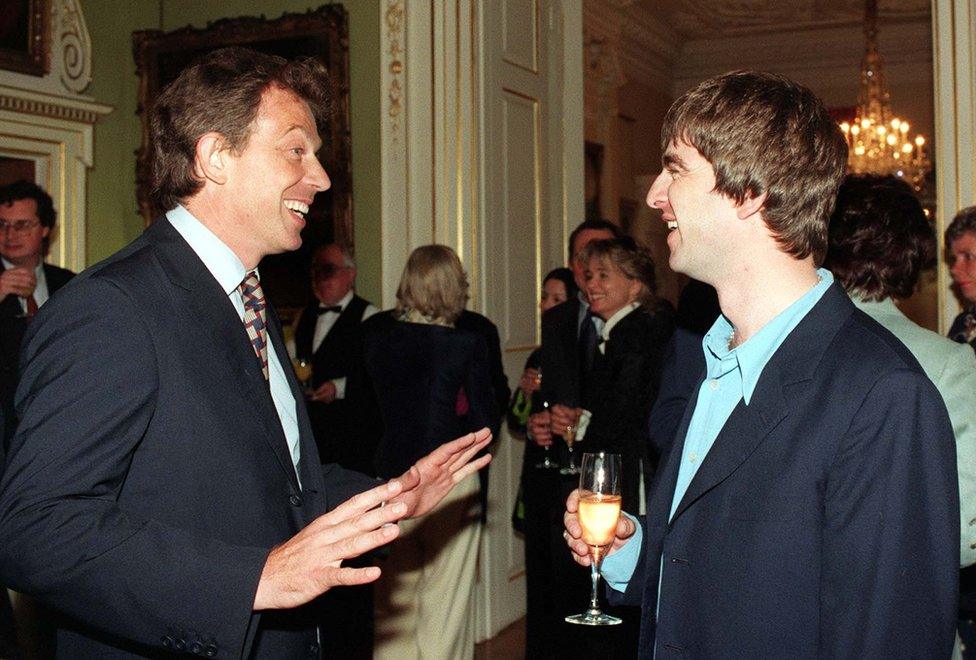
Lara Croft became an icon of Cool Britannia, along with musicians such as Noel Gallagher
Even the government was keen to capitalise on the game's success. Lara was named as an ambassador for British scientific excellence, external.
"There was a kind of Britsoft along with Britpop, it was 97 when [Tony] Blair got in [as prime minister]," says Mr Simons.
"I think she's part of that fabric of icons that came out of Britain, that was part of that Cool Britannia, external, Blur and Oasis, Spice Girls sort of period."
Ian Livingstone CBE, who launched Tomb Raider when he was executive chairman of Core Design's parent firm Eidos, said nobody expected the game to be as successful as it was.
"I think we had budgeted 100,000 units... and we ended up selling 7.5 million units of the first Tomb Raider. Lara Croft became arguably as iconic as James Bond did in films."

Angelina on Lara

Angelina Jolie starred in two blockbuster Hollywood adaptations - Lara Croft: Tomb Raider (2001) and the sequel Lara Croft: Tomb Raider - The Cradle of Life (2003).
Jolie has said that filming in Cambodia for the first film was a life-changing experience. She adopted her first child from the country shortly after the film's release, and it also sparked her humanitarian work.
In the film companion she explained her reservations about how the film would thrust her into the limelight.
"Did I really want to star in a massive blockbuster that was going to up my profile like never before and would make it impossible to disappear from the public eye?" she said.
Jolie said she was "extremely out of shape" before the film but spent months training to prepare for the role, including weapons training by an SAS instructor, fight training, gymnastics, motorcycle riding and dog sledding.
She only wore shorts once throughout both films and her bra was only padded by one extra cup size.
Jolie said: "My Lara has still got what makes her a cyber-icon, but I'm more athletic than curvy, in control rather than cute."
She recently returned to Cambodia to direct a film adaptation of First They Killed My Father, the memoir of Cambodian human rights activist Loung Ung.

It was a hit because it was "an amazingly high-quality game", Mr Livingstone says, and having a powerful, female central character boosted its appeal.
"Men wanted to play the character of Lara Croft and a lot of women wanted to be Lara Croft."
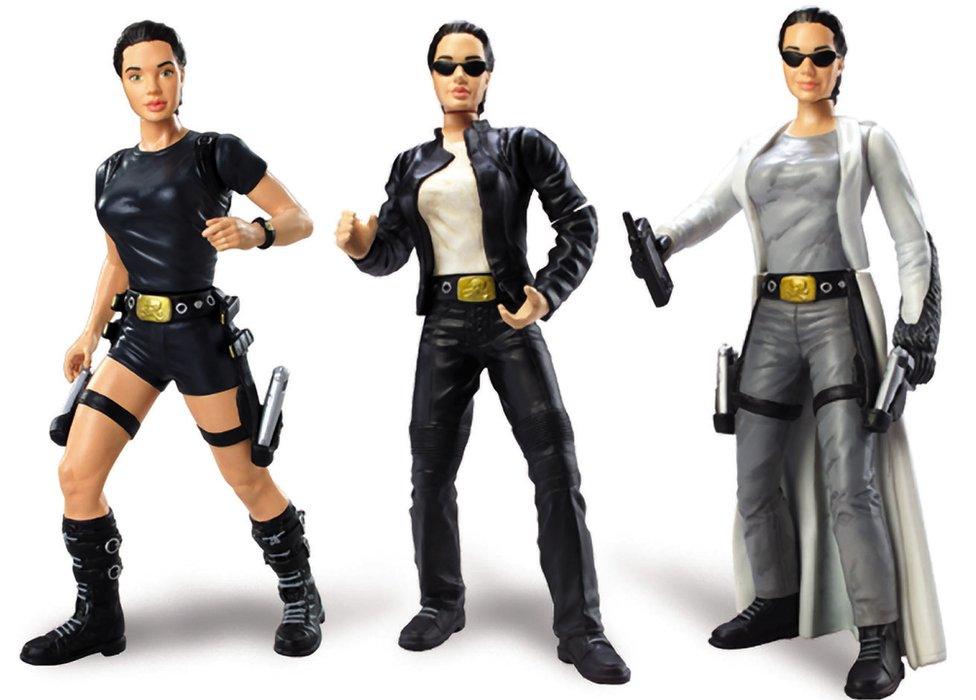
Lara Croft figurines were produced to tie in with the 2001 film
However, the character's exaggerated feminine image has antagonised many. Feminist Germaine Greer dubbed her a "sergeant major with balloons stuffed up his shirt" and "not a real woman".
Sex was certainly used to sell the games. A series of models were hired to play her, including former Page 3 girl Nell McAndrew - who was later fired when she posed nude as Lara for Playboy, external.
"Sex has been used to market things in the world since marketing pretty much started," says Mr Simons. "And that's not peculiar to videogames by any means."
And while the games emphasised Lara's athleticism, Mr Simons said later versions featured a character who now had noticeably larger breasts.
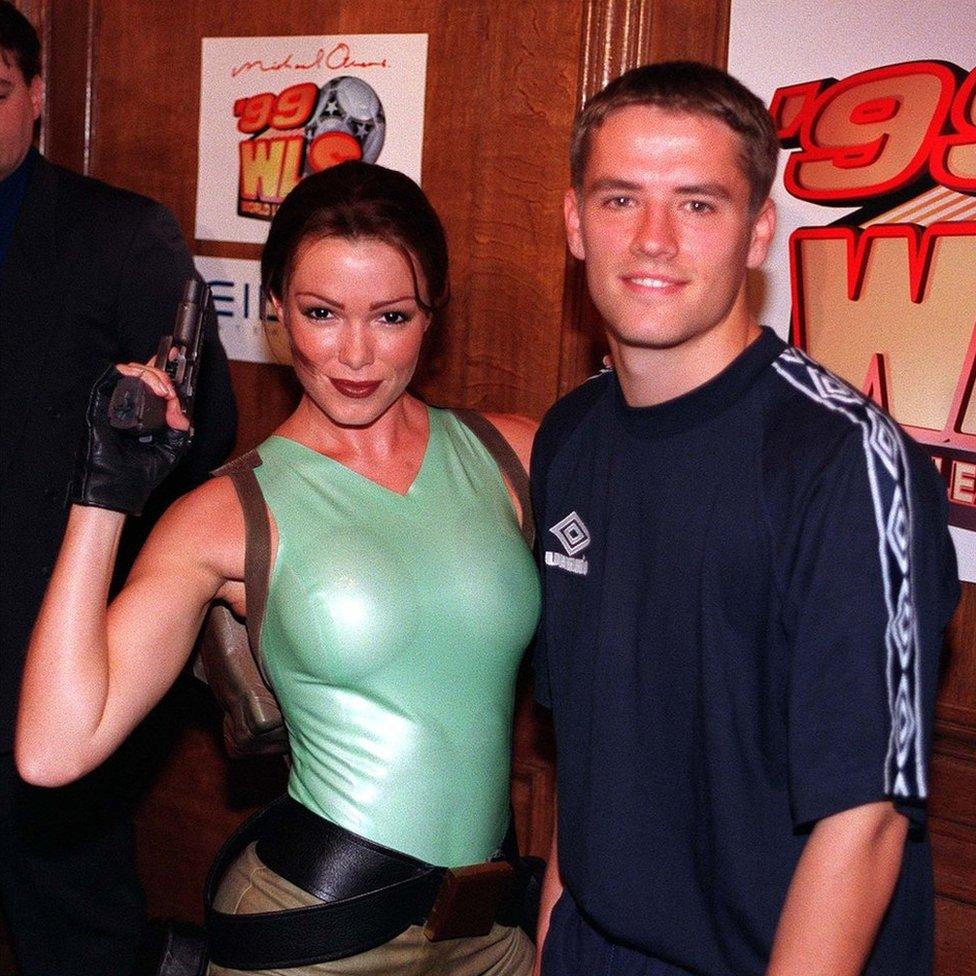
A series of models were hired to be the face of Lara Croft, including Nell McAndrew, shown here with footballer Michael Owen
However, Ms Marie thinks being a sex symbol is not incompatible with being a powerful female icon.
"To some people Lara was a sex symbol and was this beautiful woman who was positioned as a pinup character in the advertising," she says.
"But she was also inspirational on so many levels and had a fairly fleshed out character and a very interesting one, and inspirational in terms of her independence and quick wit."
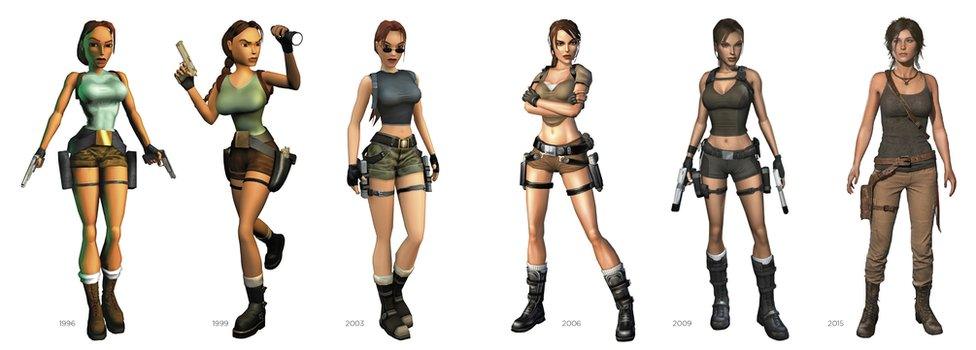
Meagan Marie explores how Lara Croft has changed in 20 Years of Tomb Raider
Now, 20 years on, Tomb Raider has evolved and the Lara Croft character is noticeably less sexualised - the hotpants have gone and her breasts have shrunk.
The 2013 reboot featured a younger Lara, and explored her origins and how she became the Tomb Raider.
"This Lara was definitely positioned as more of a flawed character in that she's very human," says Ms Marie.
"So she expresses fear and has to push through that to be courageous and save her friends."
Lara may be less prominent in mainstream media now, but the 2013 reboot was the best-selling game in the history of the franchise, and a new film is set to come out in 2018, external.
"It's really incredible to see that 20 years after Lara first debuted she is still doing incredibly well and the future looks very bright for the franchise," says Ms Marie.
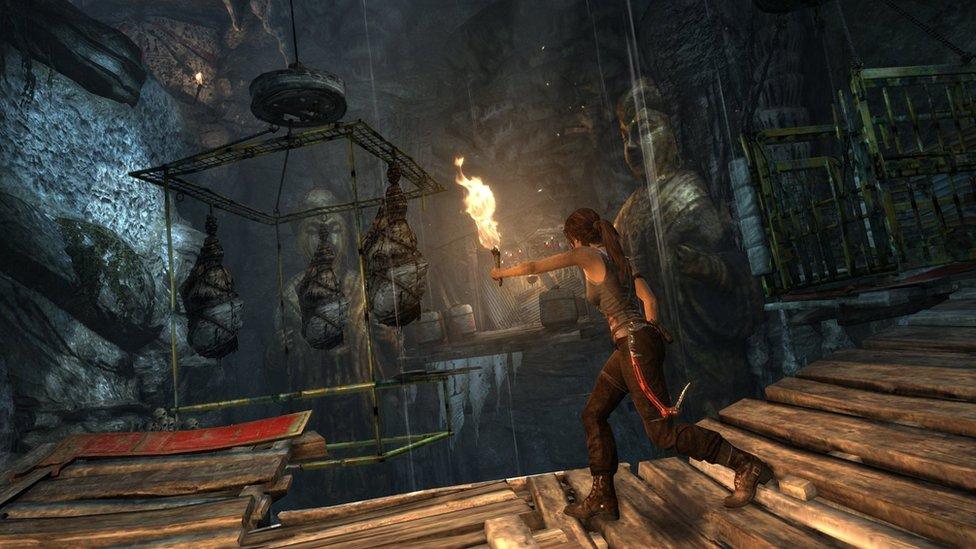
Lara Croft was given a fresh new look for the 2013 Tomb Raider reboot
- Published29 April 2016
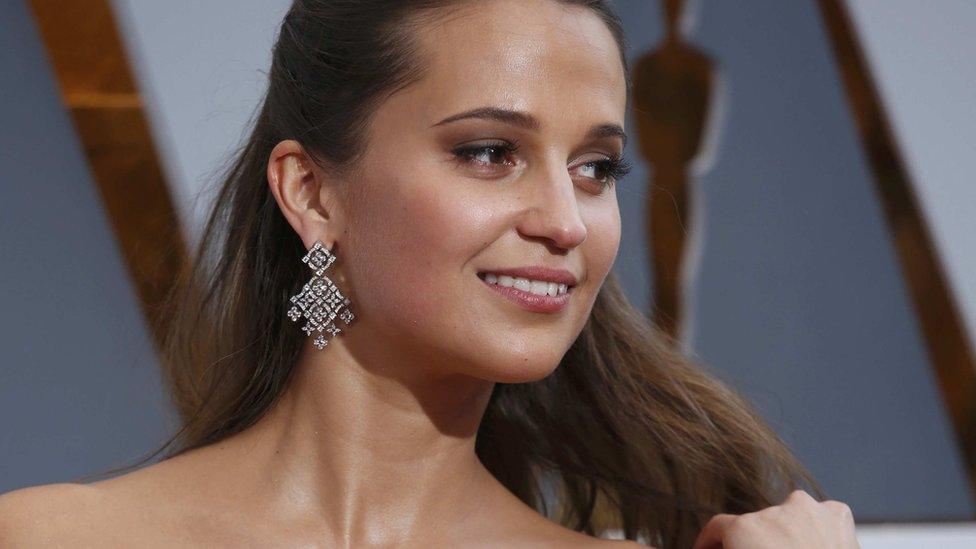
- Published13 November 2015
